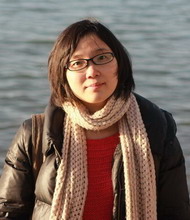Cultural Center in Seoul Offers Window into China
The China Cultural Center in Seoul has offered a window into Chinese culture and language since its establishment in 2004.
Located in the heart of Seoul, the center, the sixth of its kind in the world set by the Chinese government and the first in Asia, brings China closer to South Koreans, or even foreigners living in South Korea, by putting on exhibitions, seminars and performances.
The place and its activities are in consonance with China's efforts to enhance its soft power, aimed at presenting its image to the rest of the world in a favorable light. Indeed, many people who are taking part in the various programs provided by the center seem to be pleased with their learning experience.
On a frigid morning, a small group of people gathered in a large room in the basement of the seven-story center for a class on the Chinese zither known as the guzheng.
Sitting in front of their instrument, they readied themselves to play the guzheng by attaching four picks to the fingers of the right hand. Then, at the sign of the instructor, they began to pluck the strings of the Chinese traditional instrument, though not in a proficient manner, but with ardor.
"I learned this (instrument) when I was in China before, but it was hard to find an opportunity or a teacher to learn (guzheng) when I came back to South Korea. So I searched the Internet and found out that the China Cultural Center offers this program, then I came to learn," said Park Jung-sook, 48.
The guzheng instructor, Peng Liying, explained the goal of her class is not only about teaching how to play the instrument but also conveying cultural knowledge.
"I have taught about 80-90 students since guzheng lessons began in 2007. Of all students, the youngest is a four-year-old, and the eldest is an 89-year-old woman," said the instructor. "I have taught them how to read the music book, and distinguished the guzheng from the gayageum, the traditional South Korean string instrument, because many South Koreans are confused between the two. So I must state that it's the guzheng, as well as its history and some basic information, such as its composition."
The center allows the public easy access to Chinese traditional instruments that are difficult to be enjoyed as hobbies due to a lack of proper teaching places in South Korea.
The erhu, the Chinese violin with two strings, is one of them. On another morning, erhu class was held in the same room in the basement. Each participant indulged in playing the erhu, following instructions from the teacher.
Woo Hyun-sook, 54, said that she became interested in learning Chinese culture after she had her Chinese daughter-in-law. "My daughter-in-law is Chinese and that I wanted to gain a better understanding of China. By coming to the China Cultural Center, I get to see exhibitions on China, skills of Chinese people and learn a lot about China. So I like it," said Woo.
Another participant in erhu class, Kim Kyung-hee, said that learning the culture through playing traditional instrument is a terrific opportunity that should not be missed at the center. "I think this opportunity, if expanded and supported by preparing a wider range of programs to promote China, will be significant help for understanding and learning Chinese culture," said Kim, 52.
Chinese language classes at the center run at several different levels. People who are interested in learning Chinese, regardless of their age, get to learn the language by being introduced to Chinese songs. And because the courses are more concentrated on comprehending the culture, quite different from those strictly language-learning classes of so-called hagwons, or private educational institutes, they are popular among old people.
Choi Ki-jeon, 65, said that learning Chinese songs is a useful method for acquiring Chinese skills. "As I learn Chinese, pronunciation is very difficult. I think singing Chinese songs would be helpful in terms of pronunciation. I expect that this will help me a lot fix my pronunciation," said Choi.
On weekends, the center carries a course in which people can learn Chinese culture in a somewhat more energetic way than in music and language classes. Tai chi class was held on Saturday morning. "Each move helps strengthen flexibility and muscles of the body and raises my sense of balance, so that I can protect my body from the danger of falling or sliding. Therefore, it's really good for health," said Chun Gab-sun, 66.
The China Cultural Center in Seoul inarguably plays a crucial role in developing a more pleasant image of China among people in South Korea by building up cultural exchanges in diverse aspects. The center has organized an array of cultural activities, such as exhibitions and artistic performances for 17 provinces, autonomous regions and municipalities of China, aimed at cultivating a better comprehension of China, according to Che Zhaohe, the director of the center and counselor at the Chinese Embassy in South Korea. The director boasted the popularity of the center's activities, as they are booked up as quickly as less than a minute after being put up online.
"Culture is a kind of heart-to-heart communication and a kind of heart-to-heart exchange, so it plays a very special role in promoting mutual understanding," said the director. "I think if we do the so-called cultural diplomacy well, it will bring the two peoples of China and South Korea closer......For these years, we have built a bridge of friendship between the two peoples and established a reliable platform with which the Chinese culture approaches South Korea."
The center, indeed, held a cultural festival ahead of the Chinese Lunar New Year for seventeen days from January 13. An exhibition featuring many prominent Chinese artists of paintings and calligraphic works was presented as part of the festival. The works of the participating artists portrayed rich cultural heritage and natural scenic beauty of Anhui province in China. Visitors were able to heighten their understanding of China by gaining a deep insight into a part of China with watching calligraphy works, photographs and paintings.
At the National Center for Korean Traditional Performing Arts in Seoul, a joint concert between South Korea and China was also held as part of the center's efforts to boost cultural exchanges between the two countries.
Featuring China's Anhui Song and Dance Ensemble, which has staged scores of large-scale operas, dance dramas, symphonic and ethnic music pieces about China, the concert captivated audiences with the charm of the two cultures. The performances carried out by the two countries' singers and performers have drawn praise and admiration from the audiences throughout the concert.
All these numerous activities offered by the China Cultural Center in Seoul have helped deepen the understanding between the two peoples. The center has laid the foundation for intimate cultural exchanges and is still striving to promote a better understanding of China among people in South Korea.
Source: Xinhua
2011-01-31




